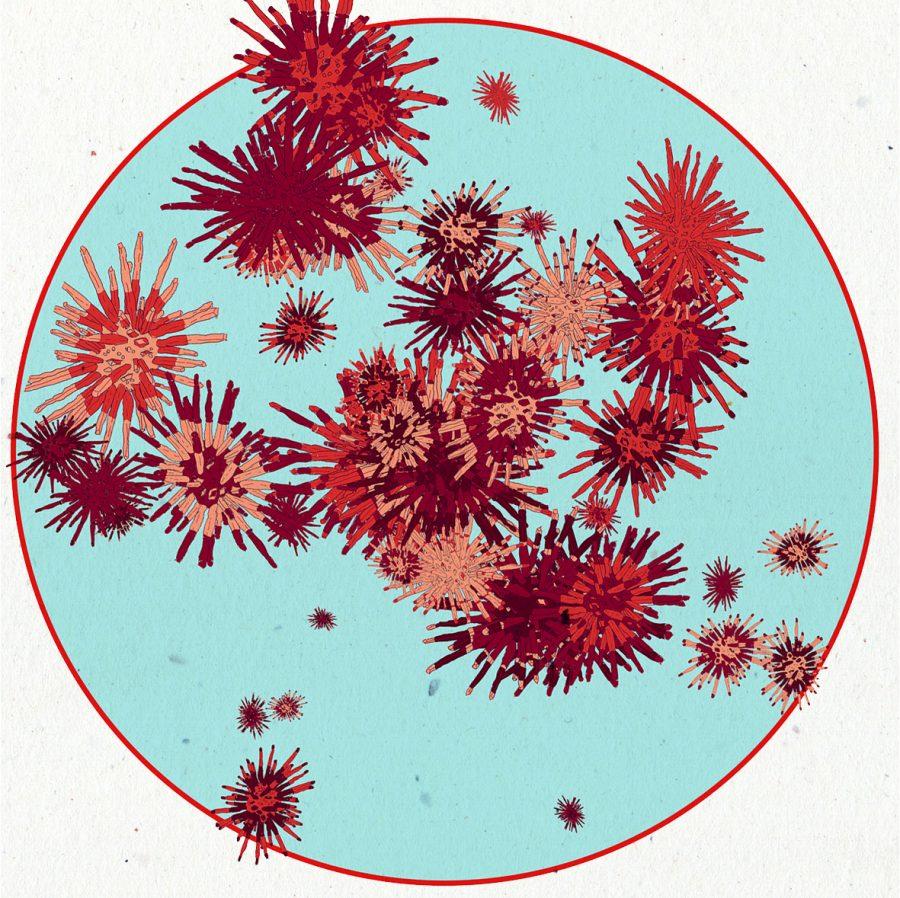Art and math intersect in Foundry exhibition
Published June 2, 2017
You might think that art and numbers/mathematics lie at opposite ends of the continuum, but the exhibition “The Nth Degree” at the Foundry Art Centre in St. Charles displays fascinating parallels between the two.
Art, math, and mythology come together in “Icarus” by Shannon Soldner. She explores ideas about self-deception which “become our own personal myths, allowing us to cope with the sometimes less than perfect realities we live in.” The painting is 48” x 24”, oil and gold leaf on panel. Soldner references the ancient Greek myth of Icarus; the boy ignored his father Daedelus’ orders and flew too close to the sun with constructed wings held together with wax. The sun melted the wax and Icarus fell into the sea where he perished. The painting features a naturalistic male figure, nude from the waist up and seen from the back, who freefalls in front of a gold background. Above and below him in the sky are math/physics equations, written in gold. The equations may reflect Icarus’ (mis)calculation that he could fly closer to the sun than reality dictated.
Ron Geibel also examines reality and deception in his white porcelain pieces “Everything is Perfect #1” and “#2”, each approximately twelve inches high. Geibel crafted smooth flowerpot-like bases which support plantlike forms made up of dozens of small wedges of clay. These pieces are part of Geibel’s topiary series, and indeed resemble topiary – bushes cut into decorative shapes. The series evokes a “perfectly groomed exterior with the manicured lawn and trimmed shrubs [which] represents the idea that ‘everything is perfect.’ ” The white color of the clay may stand for supposed purity, cleanliness, or openness. Geibel continues, “[The] inconspicuous exterior hides issues like sexuality, gender, and identity.” These plantlike forms are tamed and civilized to an extreme: easily a few hundred wedges of clay make up the forms. There’s an OCD quality to ensuring each wedge is correctly shaped, sized, and placed exactly so. A lot of energy goes into making a perfect exterior. People only do this if they feel the need to hide what is beneath.
As in Geibel’s work, numbers and repetition feature prominently in Cyane Tornatzky’s three dynamically generated inkjet prints “The Sea You Left Behind (50)”, “(100)”, and “(300)”. The prints depict 50, 100, and 300 sea anemones, respectively, on a round blue background bordered in red. She drew some of the anemones by hand; scanned the images into the computer; then used a computer program called Processing to multiply, resize, and arrange the anemones. When seen together, the three prints give the impression of bacteria multiplying in a Petri dish. “The Sea You Left Behind” as a title may recall the evolutionary period 500 million years ago when the first sea creatures left the ocean. Also, the anemones in the prints seem to be multiplying to such a degree that they’ll run out of water. Tornatzky says, “Working in tandem with the computer, I use it as a medium that allows for flexibility and experimentation. A willingness to let go allows for a vibrant collaboration.”
“The Nth Degree” is on view at The Foundry Art Centre through June 9. The gallery is located at 520 N. Main Center in downtown St. Charles. Gallery hours are Tuesday – Thursday, 10:00 a.m. – 8:00 p.m., Friday and Saturday 10:00 a.m. – 5:00 p.m.; and Sunday 12:00 p.m. – 4:00 p.m. For more information, call 636-255-0270 or visit www.foundryartcentre.org.















